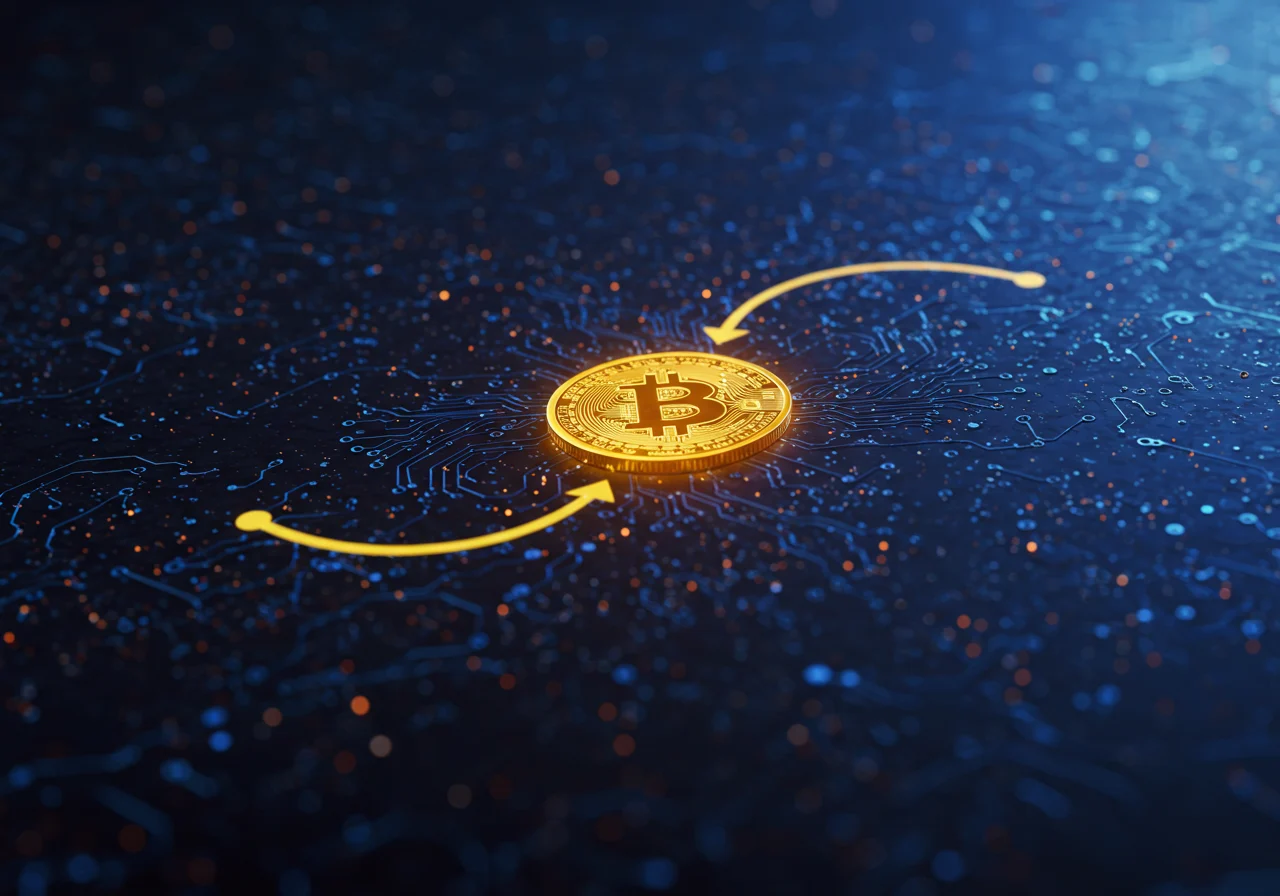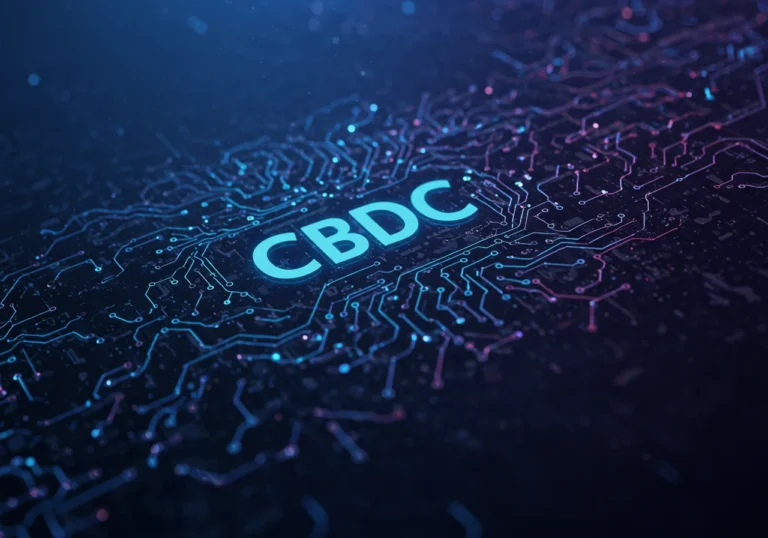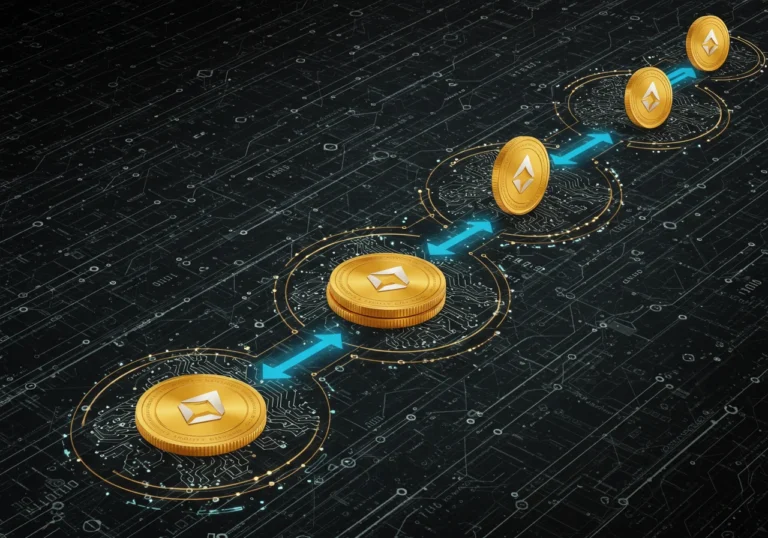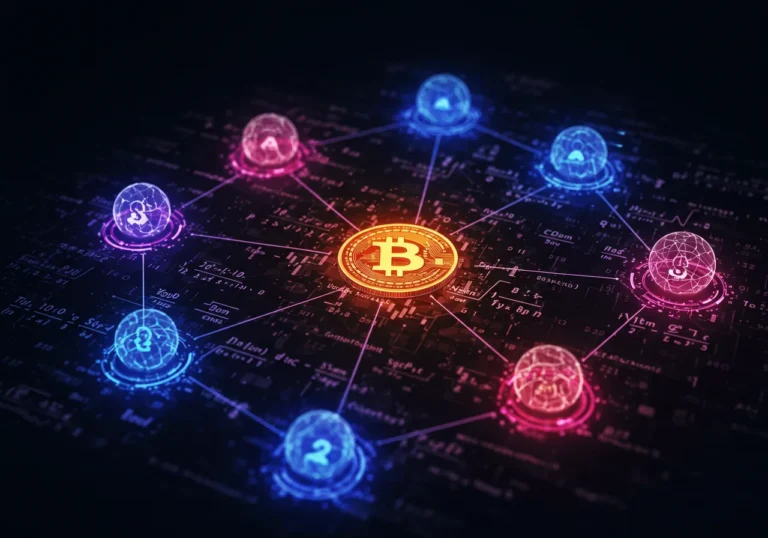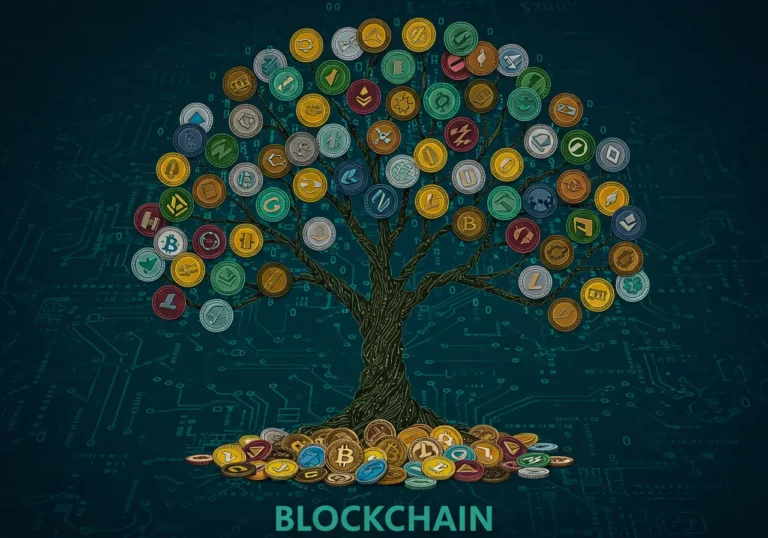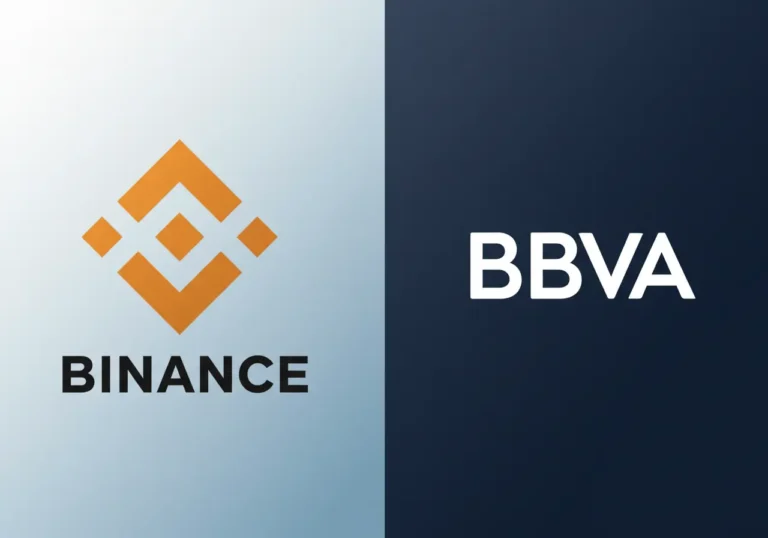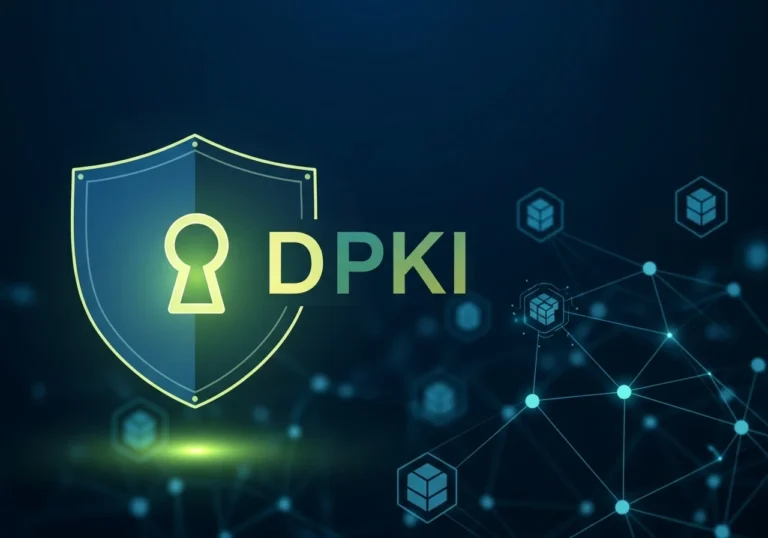How Does a Bitcoin Transaction Work? A Step-by-Step Guide
Bitcoin Transaction moves through a few clear stages. If you follow them, you will see the whole path. Just simple steps you can picture.
What is a Bitcoin Transaction?
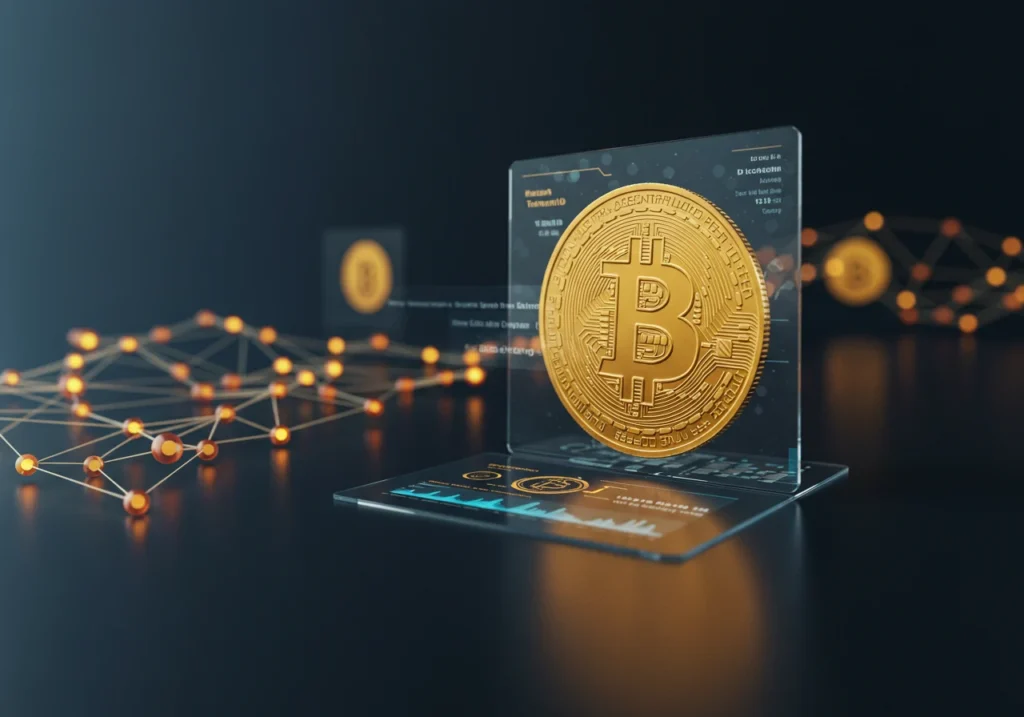
A Bitcoin Transaction is the message that moves value from one address to another. Think of it like a sealed envelope with a sender, a recipient, an amount, and a proof that the sender agreed to the transfer. That proof is a digital signature.
The parts of a transaction
- Sender address: where the coins come from.
- Recipient address: where the coins go.
- Amount: how many bitcoins move.
- Signature: proof that the sender authorized the transfer.
- Fee: a small amount paid to the network to process the transaction.
These pieces travel across the Bitcoin network and end up recorded on the blockchain.
Step 1 — Creating and signing the transaction
When you click “send” in your wallet, the wallet creates the transaction. The private key in your wallet makes the digital signature. That signature proves you own the coins and that you approved the payment.
This signing step is the heart of Bitcoin transaction security features. Only the private key holder can make a valid signature. If someone else tries, nodes will reject the transaction.
Step 2 — Broadcast and the mempool
After signing, your wallet broadcasts the transaction to nearby nodes. These nodes share it with others. The transaction sits in the mempool — a queue of unconfirmed transactions.
This is part of the Bitcoin transaction process flow: create → broadcast → wait in mempool → be picked by a miner. The mempool is visible to the network, so miners can see which transactions are waiting.
Step 3 — Fees and priority
Miners choose transactions from the mempool. They prefer higher fees because fees are their reward. That is why you see suggestions in wallets: pay more to be processed faster.
This is where Bitcoin transaction fees explained matters:
- Fees are not fixed.
- Fees rise when the network is busy.
- Fees depend on transaction size (in data) and urgency.
If you set a low fee, your transaction may wait longer in the mempool. If you set a higher fee, miners will likely include it sooner.
Step 4 — Mining and the first confirmation
A miner bundles many transactions into a block and competes to add that block to the blockchain. When a miner succeeds, your transaction receives its first confirmation. The Bitcoin transaction confirmation time is the time it takes to get that first confirmation.
On average, one block is found every ten minutes, so one confirmation typically takes around ten minutes. But network congestion, luck, and fee size change that number. Many services require several confirmations (often 3–6) before treating a payment as final.
Step 5 — Multiple confirmations and finality
Each new block that follows the block containing your transaction adds another confirmation. More confirmations make reversal increasingly difficult. That growing assurance is the key to Bitcoin transaction verification steps: signature check, double-spend check, and proof-of-work validation by nodes across the network.
After six confirmations, most participants consider a transaction effectively final. That is why merchants or exchanges often wait before releasing goods or crediting accounts.
Special tools and cases

Replace-by-fee (RBF) and speeding up transactions
If your transaction is stuck, some wallets let you increase the fee using Replace-by-Fee (RBF). That sends the same transaction again with a higher fee so miners pick it faster.
Child-pays-for-parent (CPFP)
If you received a payment that is stuck because the sender used a low fee, you can create a new transaction that spends that incoming amount with a high fee. Miners might include both transactions together to collect the combined fee.
These tools are part of practical ways to manage the Bitcoin transaction process flow when congestion strikes.
Why confirmations and fees should guide your choices

If you need fast settlement, pay a higher fee. For casual transfers with no rush, set a lower fee and wait. The Bitcoin transaction confirmation time and fees are levers you control.
Contracts and exchanges typically set their own confirmation thresholds. A coffee shop might accept one confirmation; a bank-sized transfer usually needs several.
Security features that protect transactions
Bitcoin has built-in layers that protect users:
Digital signatures
A valid signature proves ownership and prevents unauthorized spending.
Distributed verification
Many independent nodes check each transaction. No single party controls the ledger.
Immutable history
Once many confirmations exist, altering past transactions becomes impractical because it requires redoing large amounts of work.
These are the main Bitcoin transaction security features that make the system robust.
Simple examples to make it real
Paying a friend
You send $20 worth of BTC. Your wallet creates the transaction, signs it, and broadcasts it. The mempool accepts it. A miner includes it — one confirmation. Your friend sees “pending.” After a few confirmations, the transfer is final.
Buying online
An online store waits for three confirmations before shipping. You choose a fee that should get confirmed within an hour. If the network is busy, the wallet may advise a slightly higher fee.
These short stories show how fees and confirmation time affect real life.
Practical tips for safer transactions
- Double-check addresses before sending. A single wrong character sends funds forever.
- Use recommended fees for timely confirmation. Check fee estimators.
- For large transfers, wait for more confirmations (4–6).
- Use hardware wallets to keep private keys offline and safe.
- Consider small test transactions when sending to a new address.
These small habits reduce risk and save headaches.
Conclusion
A Bitcoin transaction moves in clear stages: create, broadcast, wait in mempool, get mined, and accumulate confirmations. Fees and confirmation time determine how quickly your transaction completes. Verification steps and security features protect the system and make sure only rightful owners can move funds.
Understanding these steps turns mystery into predictability. You gain control over cost, speed, and safety. That makes using Bitcoin less stressful and more practical.
FAQ
Q: How long does a Bitcoin transaction take to confirm?
A: The first confirmation often appears in about ten minutes, but the Bitcoin transaction confirmation time varies with network load and fee size. Many services use 3–6 confirmations for finality.
Q: Why did my transaction get stuck?
A: Usually the attached fee was too low compared with current demand. Use RBF or wait for lower congestion.
Q: How are Bitcoin fees calculated?
A: Fees depend on transaction size in bytes and network demand. Wallets often show fee estimates; this is the core of Bitcoin transaction fees explained.
Q: What are the main verification steps?
A: Nodes check the signature, ensure the coins weren’t already spent, and validate the block’s proof-of-work — these are the Bitcoin transaction verification steps.
Q: Are Bitcoin transactions secure?
A: Yes. Features like digital signatures, decentralized verification, and the immutable ledger form the main Bitcoin transaction security features. But safe personal practices — like checking addresses and using hardware wallets — are still vital.
Quick recap
- A Bitcoin transaction is a signed message moving value between addresses.
- Bitcoin transaction process flow: wallet → mempool → miner → block → confirmations.
- Bitcoin transaction fees explained: fees vary with size and demand; higher fees speed processing.
- Bitcoin transaction confirmation time: average ~10 minutes per block, but variable.
- Bitcoin transaction verification steps: signature check, double-spend check, proof-of-work validation.
- Bitcoin transaction security features: digital signatures, decentralization, and immutable records.
- Use hardware wallets, check addresses, and set fees to match urgency.
Table of Contents

Hello, I’m Edmilson Dias, founder of CoinBringer. I created this platform to guide people through the fast-moving world of cryptocurrency with clarity and safety. With years of research in blockchain and digital security, my goal is to translate complex topics into practical knowledge, offering reliable tutorials, safety insights, and guidance for both newcomers and experienced users.
Discover more from CoinBringer
Subscribe to get the latest posts sent to your email.

